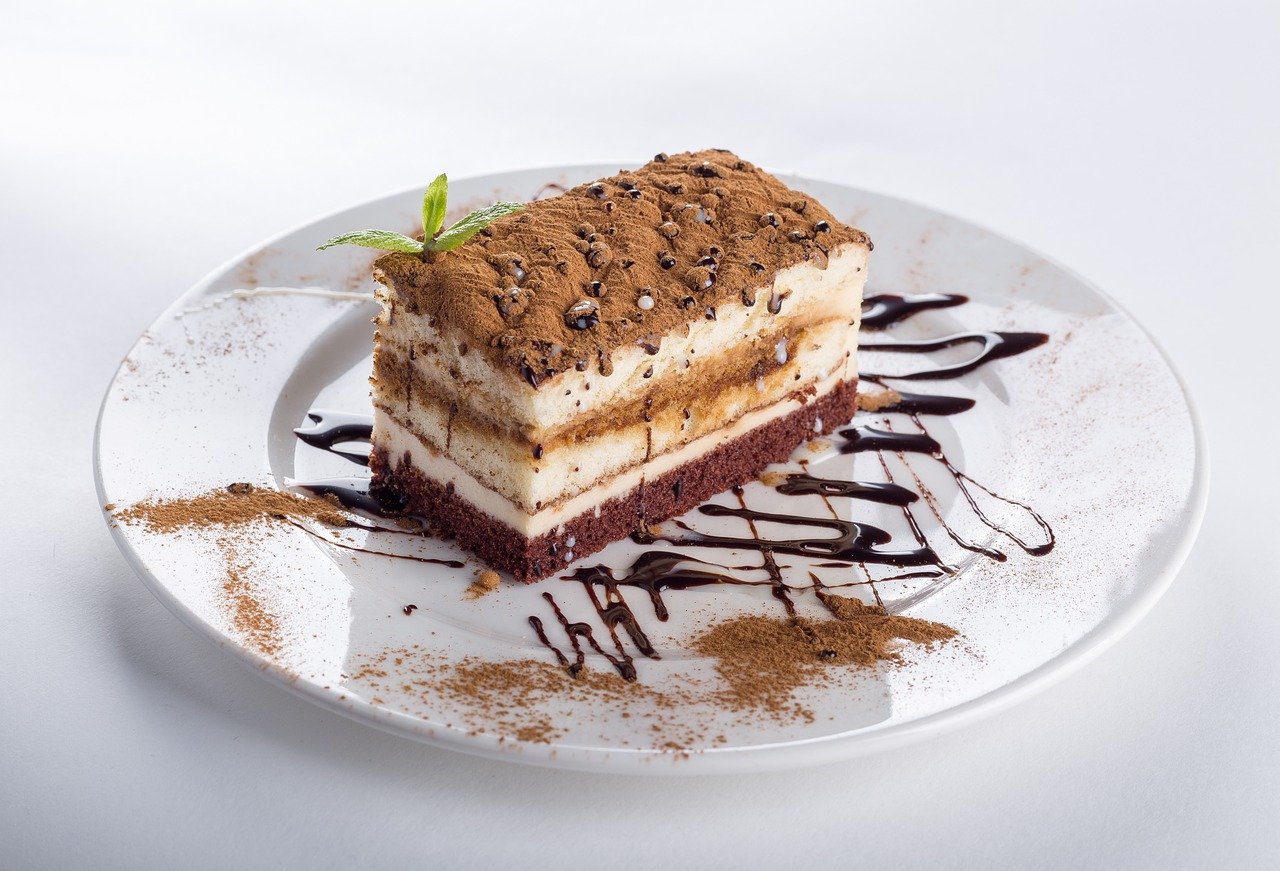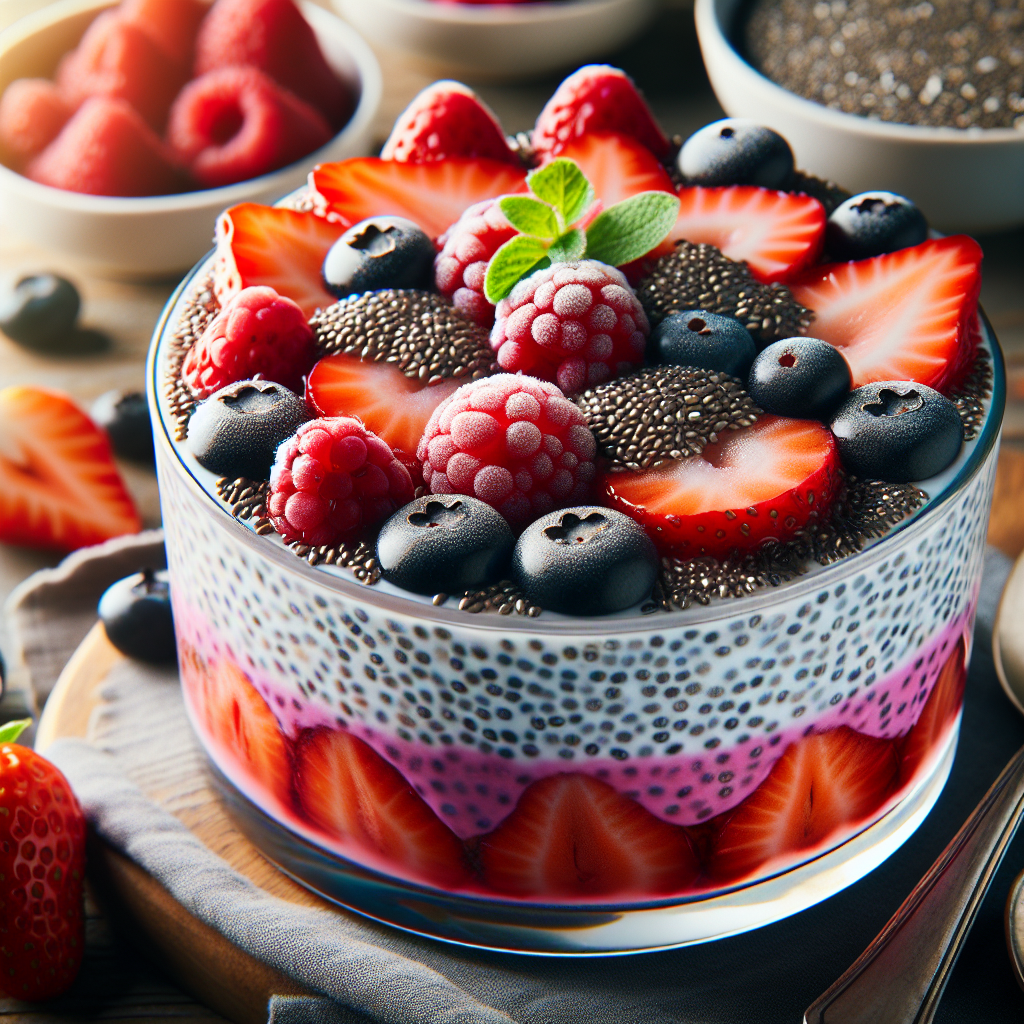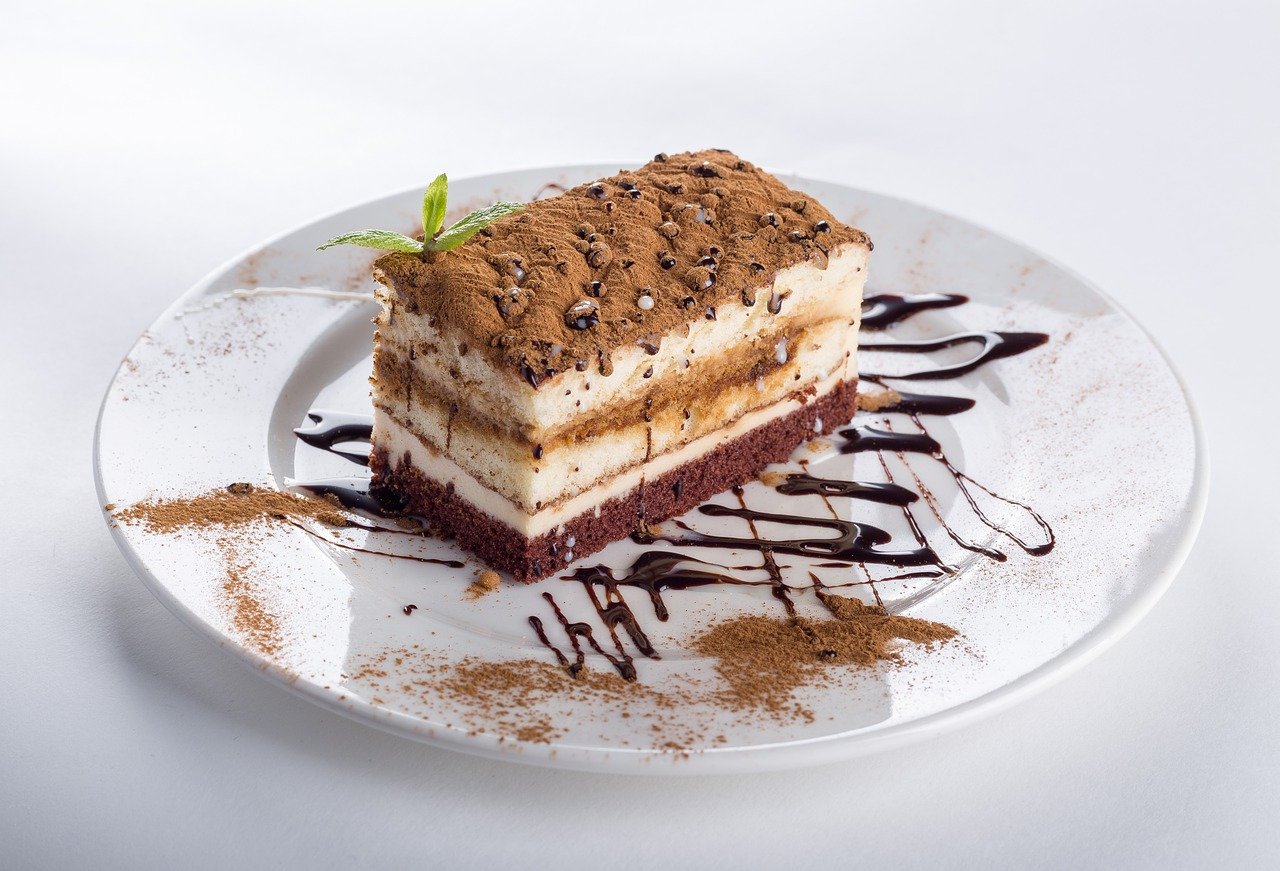Are you diabetic and vegan? Are you tired of feeling like you’re missing out on all the sweet treats during lunchtime? Well, worry no more! In this article, you will discover the secrets to creating delicious and diabetic-friendly lunch desserts that are completely vegan. With a few simple ingredients and easy-to-follow steps, you can indulge in guilt-free desserts that not only satisfy your sweet tooth but also keep your blood sugar levels in check. Get ready to tantalize your taste buds and treat yourself to a delightful lunchtime experience like never before!

Vegan Desserts for Diabetics
Introduction to Vegan Diabetic-friendly Lunch Desserts
Being a vegan and having diabetes doesn’t mean you have to give up on delicious and satisfying desserts. With the right ingredients and techniques, you can indulge in sweet treats without compromising your health. In this article, we will delve into the world of vegan desserts for diabetics and explore some mouthwatering recipes that are both nutritious and delectable.
Understanding the Diabetic Diet
Living with diabetes requires careful management of your diet to maintain stable blood sugar levels. A diabetic diet focuses on controlling carbohydrate intake, as carbs have the most significant impact on blood sugar. It also emphasizes consuming foods rich in fiber, healthy fats, and lean proteins. By understanding the principles of a diabetic diet, you can make informed choices when preparing vegan desserts that won’t cause rapid spikes in blood sugar.
Benefits of Vegan Desserts for Diabetics
There are numerous benefits to opting for vegan desserts if you have diabetes. Firstly, vegan desserts contain no animal products, making them cholesterol-free and lower in saturated fats. Secondly, plant-based desserts often feature ingredients rich in fiber, which aids in slower digestion, preventing sudden blood sugar spikes. Lastly, vegan desserts can be a great way to incorporate more nutrient-dense foods into your diet, such as fruits, whole grains, and healthy fats.
Choosing the Right Ingredients
Finding Diabetic-friendly Sweeteners
To keep your vegan desserts diabetic-friendly, it’s essential to choose sweeteners with a low glycemic index. Natural sweeteners like stevia and monk fruit extracts are excellent options as they provide sweetness without causing significant fluctuations in blood sugar levels. Additionally, using date paste or unsweetened fruit purees can add a natural sweetness while providing fiber and essential nutrients.
Using Whole Grains and Alternative Flours
Incorporating whole grains and alternative flours in your vegan desserts can provide a host of health benefits. Almond flour serves as a low-carb option, while coconut flour adds dietary fiber to your treats. Oat flour is a nutritious choice, offering a good balance of fiber, protein, and complex carbohydrates. Gluten-free individuals can enjoy desserts made with buckwheat flour or quinoa flour, which is also rich in protein and minerals.
Incorporating Healthy Fats
Healthy fats play a crucial role in a well-balanced diabetic diet and can add creaminess and richness to your vegan desserts. Avocado is a versatile ingredient that provides smooth textures and healthy monounsaturated fats. Coconut milk, whether full-fat or light, can lend a creamy consistency to your desserts. Nut butters such as almond or cashew butter add protein and healthy fats, making them great choices for adding flavor complexity. Chia seeds, rich in omega-3 fatty acids, can be utilized to give your desserts an extra nutritional boost.
Selecting Low Glycemic Index Fruits
When it comes to sweetening your vegan desserts, selecting fruits with a low glycemic index can help maintain stable blood sugar levels. Berries, such as strawberries, blueberries, and raspberries, are packed with antioxidants and fiber, making them great choices for diabetic-friendly desserts. Apples and pears offer natural sweetness and are high in fiber, while citrus fruits like oranges and lemons provide refreshing flavors. Stone fruits like peaches and plums are not only delicious but also provide a burst of juiciness to your desserts.
Recipes for Vegan Diabetic-friendly Lunch Desserts
Vegan Chocolate Avocado Mousse
Indulge in a decadent and creamy chocolate dessert! Blend ripe avocados with cocoa powder, a natural sweetener, and vanilla extract to create a luscious vegan chocolate avocado mousse. The avocados provide healthy fats and a velvety texture, while the cocoa powder gives a rich chocolate flavor without the added sugars.
Baked Apples with Cinnamon and Walnuts
Warm and comforting, baked apples with cinnamon and walnuts are a perfect dessert option for those craving a taste of autumn. Core and stuff the apples with a mixture of chopped walnuts, a small amount of sweetener, and a sprinkle of cinnamon. Bake until the apples are tender, and the filling is golden brown. Serve with a dollop of non-dairy yogurt for an extra touch of creaminess.
Chia Seed Pudding with Berries
Chia seed pudding is a versatile and nutritious vegan dessert that can be customized to your liking. Simply mix chia seeds with your choice of non-dairy milk, a natural sweetener, and a dash of vanilla extract. Let the mixture sit in the refrigerator overnight to allow the chia seeds to absorb the liquid and create a creamy pudding-like consistency. Top with a mix of your favorite low glycemic index berries for added sweetness and antioxidants.
Banana Oatmeal Cookies
For a healthier twist on classic cookies, try making delicious and chewy banana oatmeal cookies. Mash ripe bananas and mix them with oats, a low glycemic index sweetener, and a pinch of cinnamon. Drop spoonfuls of the mixture onto a parchment-lined baking sheet and bake until golden. These cookies are a great option for a quick and satisfying sweet treat on the go.
Coconut Yogurt Parfait with Nuts and Seeds
Layer coconut yogurt, crushed nuts, and a sprinkle of seeds in a glass to create a refreshing and visually appealing dessert parfait. Coconut yogurt provides creaminess and a hint of tropical flavor, while the nuts and seeds add crunch, texture, and healthy fats. Customize your parfait by adding a drizzle of low glycemic index sweetener or a handful of your favorite berries.
Sweetening Options
Natural Sweeteners like Stevia and Monk Fruit Extracts
If you’re looking for natural sweeteners with minimal impact on blood sugar, stevia and monk fruit extracts are excellent choices. Stevia, derived from the stevia plant, is incredibly sweet but has zero calories and does not raise blood sugar levels. Monk fruit extract, made from the monk fruit, is also a calorie-free sweetener with a sweet taste resembling sugar.
Agave Nectar as a Liquid Sweetener
Agave nectar, obtained from the agave plant, is a popular liquid sweetener among vegans. It has a lower glycemic index than traditional sugar, meaning it won’t cause abrupt spikes in blood sugar levels. However, it should be used in moderation, as it is still a concentrated source of sugar.
Date Paste as an Alternative Sweetener
Date paste, made by blending soaked dates until smooth, is a natural alternative to refined sugar. Dates have a relatively low glycemic index and offer essential vitamins and minerals. Date paste can be used as a one-to-one replacement for sugar in many recipes, adding natural sweetness and moisture to your vegan desserts.
Using Unsweetened Fruit Purees
Unsweetened fruit purees, such as applesauce or mashed bananas, can be used as a healthier alternative to sugar in your vegan desserts. These purees not only provide natural sweetness but also add moisture and texture to your baked goods. Make sure to choose unsweetened versions to keep the added sugars to a minimum.

Flour and Grain Alternatives
Almond Flour for a Low Carb Option
Almond flour, made from finely ground blanched almonds, is a nutritious and low-carb alternative to traditional wheat flour. It is high in healthy fats, protein, and fiber, making it an excellent choice for diabetic-friendly desserts. Almond flour lends a moist and tender texture to your baked goods, while also adding a subtle nutty flavor.
Coconut Flour for Added Fiber
Coconut flour, a byproduct of coconut milk production, is a gluten-free and high-fiber flour option. It has a distinct coconut flavor and works well in recipes that require a dense texture, such as brownies or cookies. Coconut flour absorbs a significant amount of liquid, so it’s important to adjust the other ingredients accordingly.
Oat Flour as a Nutritious Choice
Oat flour, made from grinding whole oats, is a nutritious choice for vegan desserts. It is rich in fiber, protein, and various vitamins and minerals. Oat flour provides a slightly nutty flavor and a soft texture to baked goods. It can be used as a one-to-one replacement for traditional wheat flour, or combined with other flours for added depth of flavor.
Buckwheat Flour for a Gluten-free Option
Despite its name, buckwheat is not related to wheat and is naturally gluten-free. Buckwheat flour has a robust flavor and works well in recipes that have a nutty taste profile, such as pancakes or muffins. It is also a good source of protein, fiber, and minerals, making it a wholesome choice for vegan desserts.
Quinoa Flour for Protein and Minerals
Quinoa flour, derived from ground quinoa seeds, is another gluten-free flour option rich in protein and essential minerals. It has a mild and slightly nutty taste and can be used in a variety of baked goods. Quinoa flour adds moisture and tenderness to your desserts, making it a valuable addition to your vegan diabetic-friendly recipes.
Incorporating Healthy Fats
Avocado for Creamy Textures
Avocado is a versatile ingredient in vegan desserts, thanks to its creamy texture and healthy monounsaturated fats. It can be pureed and used as a butter or oil substitute in recipes like mousses, pudding, or as a base for frosting. Avocado adds richness and a silky smooth consistency to your treats while providing numerous health benefits.
Coconut Milk for Richness
Coconut milk, made from the grated flesh of mature coconuts, is a popular ingredient in vegan desserts due to its rich and creamy nature. It can add depth of flavor and richness to your treats, making them indulgent and satisfying. Whether you choose full-fat or light coconut milk depends on your preference and dietary needs.
Nut Butters for Added Protein
Nut butters, such as almond butter or cashew butter, can enhance the flavor and nutritional profile of your vegan desserts. They provide a natural source of protein, healthy fats, and essential vitamins and minerals. Incorporating nut butter into recipes like cookies, bars, or even smoothies can contribute to a delicious and well-rounded dessert experience.
Chia Seeds for Omega-3 Fatty Acids
Chia seeds, tiny powerhouses of nutrients, can be an excellent addition to your vegan desserts. They are packed with omega-3 fatty acids, fiber, and plant-based protein. Chia seeds can be used as an egg substitute in vegan baking or added to smoothies, puddings, or bars to provide a nutritional boost and a slight crunch.

Using Low Glycemic Index Fruits
Berries for Antioxidants and Fiber
Berries, such as strawberries, blueberries, and raspberries, are not only delicious but also offer health benefits due to their high antioxidant content and fiber. They have a low glycemic index, meaning they don’t cause significant spikes in blood sugar levels. Incorporating berries into your vegan desserts can provide natural sweetness along with important nutrients.
Apples and Pears for Natural Sweetness
Apples and pears are fruits readily available year-round and can be added to various vegan desserts for their natural sweetness. With their high fiber content, these fruits help slow down the digestion process, preventing sudden rises in blood sugar levels. Baked apples or poached pears can be delightful additions to your diabetic-friendly dessert repertoire.
Citrus Fruits for Refreshing Flavor
Citrus fruits, like oranges, lemons, and limes, can add refreshing flavors to your vegan desserts while keeping them low on the glycemic index. These fruits are packed with vitamin C and other antioxidants, providing a tangy and zesty twist to your recipes. Citrus juices and zests can uplift the taste of cakes, pies, or glazes without compromising on healthiness.
Stone Fruits for a Burst of Juiciness
Stone fruits, including peaches, plums, and cherries, are not only juicy and delicious but also offer healthy nutrients. These fruits have moderate to low glycemic index values and can be enjoyed fresh or incorporated into baked desserts. The natural sweetness and vibrant colors of stone fruits can bring a burst of flavor and visual appeal to your vegan desserts.
Tips for Flavorful Vegan Diabetic Desserts
Experimenting with Spices and Extracts
Spices and extracts are excellent ways to enhance the flavor profile of your vegan diabetic desserts without relying on excessive sugar. Cinnamon, nutmeg, ginger, and cardamom are warm and aromatic choices that can lend depth and complexity to your recipes. Vanilla extract, almond extract, or citrus zest can also elevate the taste and aroma of your desserts.
Adding Aromatic Herbs for Freshness
Fresh herbs can add a refreshing and unexpected twist to your vegan desserts. Herbs like mint, basil, or lavender can complement fruits, add a pop of color, and infuse your creations with a delightful fragrance. Incorporating fresh herbs into your desserts can awaken your taste buds and bring a bright and invigorating element to your vegan treats.
Balancing Flavors with Salt and Acid
Salt and acid are crucial elements to achieve a balanced and well-rounded taste in your vegan diabetic desserts. A small pinch of salt can heighten the sweetness of your desserts and add depth to the overall flavor. Similarly, a squeeze of lemon juice or a dash of apple cider vinegar can cut through excessive sweetness and provide a subtle tanginess.

Baking and Cooking Techniques
Replacing Eggs with Vegan Substitutes
When baking vegan desserts, eggs can be replaced with various vegan substitutes to achieve the desired texture and structure. Common egg replacements include flax or chia seed gel, applesauce, mashed bananas, or commercial egg replacers. These alternatives provide moisture, binding properties, and leavening effects, ensuring your baked goods turn out fluffy and delicious.
Working with Alternative Binders
Traditional recipes often use eggs or dairy to bind ingredients together. In vegan dessert recipes, alternative binders are used to achieve similar results. Ingredients such as ground flaxseeds, chia seeds, or agar-agar can provide the necessary binding properties. These options are not only vegan-friendly but also add nutritional benefits to your desserts.
Using Non-Dairy Milks for Creaminess
Non-dairy milks, such as almond milk, soy milk, or oat milk, can be used as substitutes for dairy milk in vegan desserts. These plant-based alternatives offer different flavors and consistencies and can be chosen based on personal preference or dietary needs. Non-dairy milks can provide creaminess, moisture, and enhance the overall taste of your vegan desserts.
Substituting Butter with Healthy Oils
Butter is often a staple ingredient in traditional desserts but can be easily substituted with healthier oils in vegan recipes. Options like coconut oil, olive oil, or avocado oil can provide the necessary fats and moisture to your treats. Choosing oils rich in monounsaturated or polyunsaturated fats can contribute to a heart-healthy vegan dessert.
Serving Suggestions and Storage
Garnishing Desserts for Visual Appeal
Garnishing your vegan desserts not only adds visual appeal but also enhances the overall taste and texture. Consider adding a sprinkle of shredded coconut, a dusting of cocoa powder, or a drizzle of melted dark chocolate for a touch of elegance. Fresh berries, mint leaves, or edible flowers can further elevate the presentation of your diabetic-friendly treats.
Pairing Desserts with Diabetic-friendly Beverages
To complete the dining experience, consider pairing your vegan desserts with diabetic-friendly beverages. Opt for unsweetened herbal teas, such as chamomile or peppermint, to cleanse the palate and promote digestion. Alternatively, serve your desserts with a small cup of unsweetened almond milk or a refreshing glass of infused water with slices of lemon or cucumber.
Storing Leftover Desserts for Later Enjoyment
If you have leftovers or want to prepare ahead of time, proper storage is crucial to maintain the quality and taste of your vegan desserts. Most vegan desserts can be stored in an airtight container in the refrigerator for a few days. However, some delicate treats may require special care, such as keeping them refrigerated or freezing them in individual portions for later enjoyment.
In conclusion, vegan desserts for diabetics can be both healthy and delicious. By choosing the right ingredients, incorporating diabetic-friendly sweeteners, and utilizing alternative flours and healthy fats, you can create an array of vegan desserts that won’t compromise your blood sugar levels. Experimenting with low glycemic index fruits and exploring different flavor combinations will ensure your treats are not only visually appealing but also packed with nutrients. With these tips and recipes in hand, you’ll be able to enjoy guilt-free and satisfying vegan desserts while managing your diabetes effectively.


